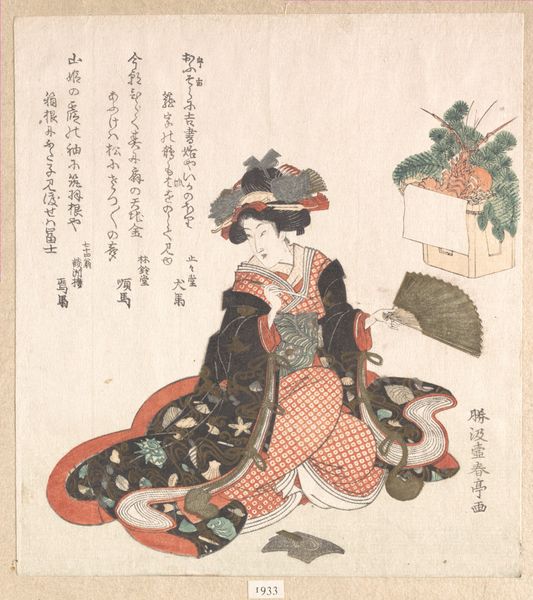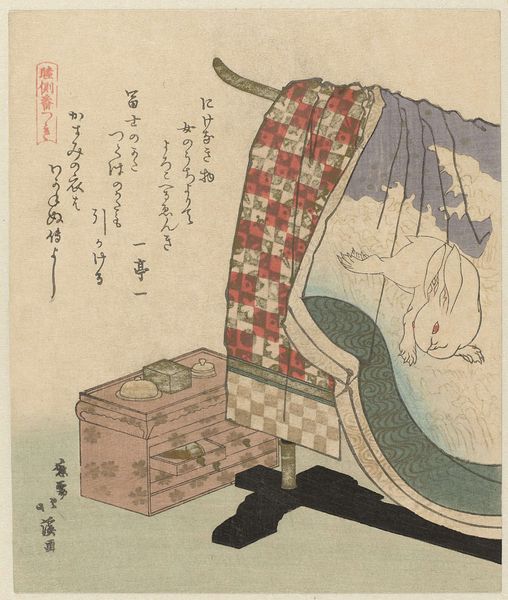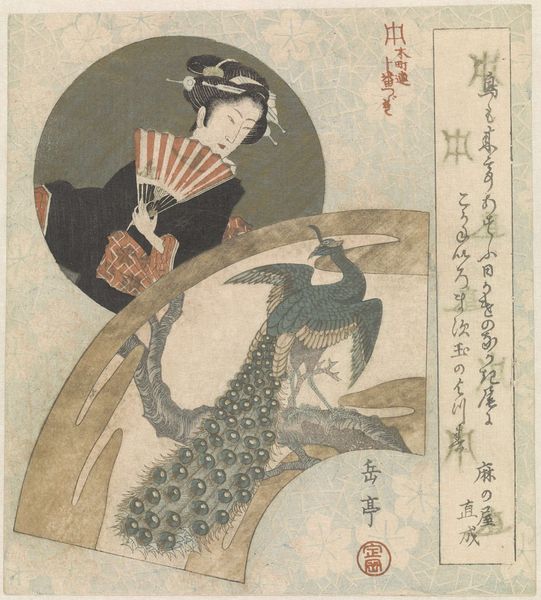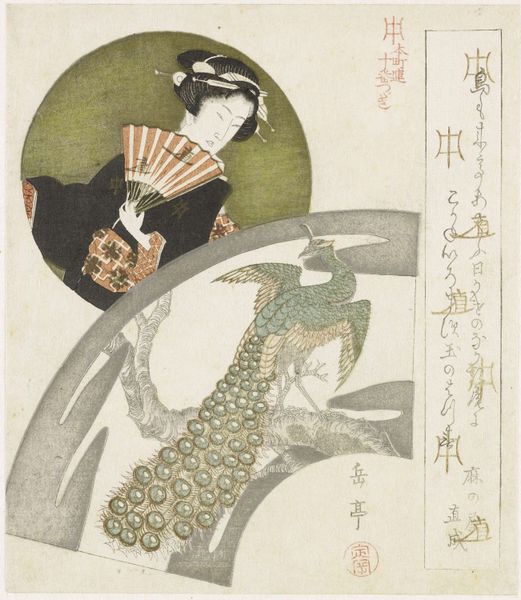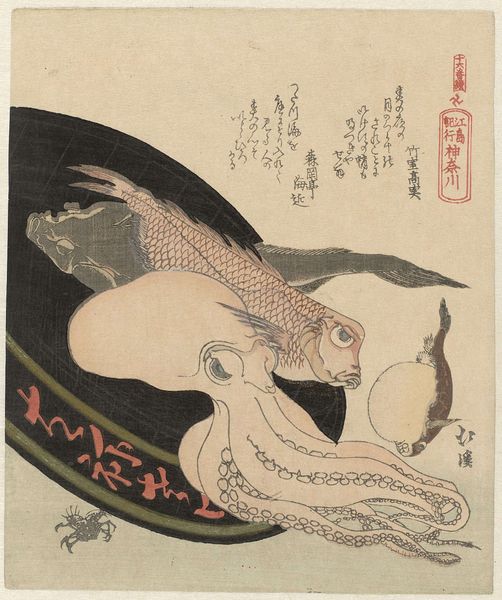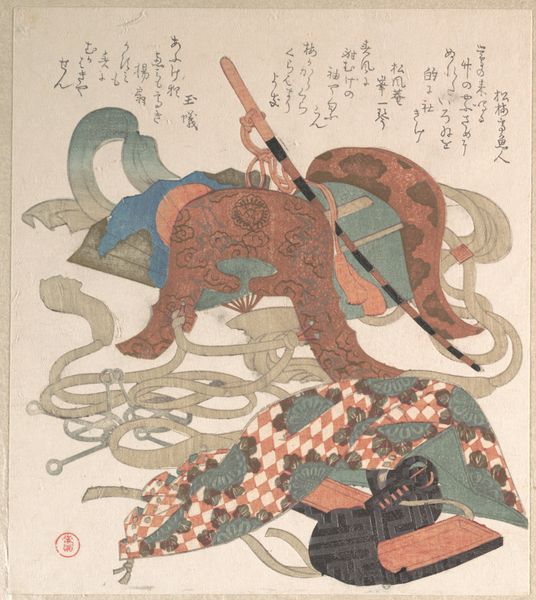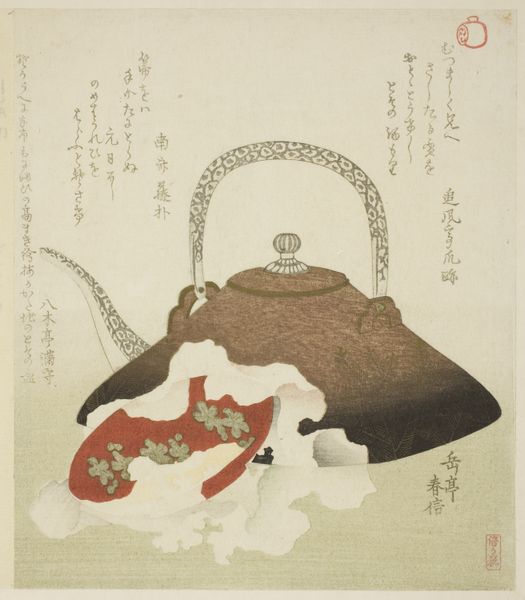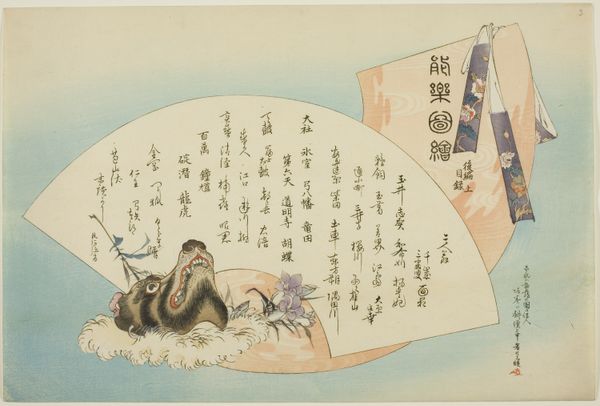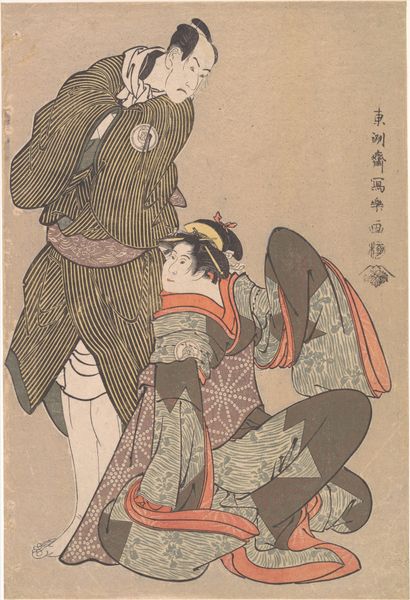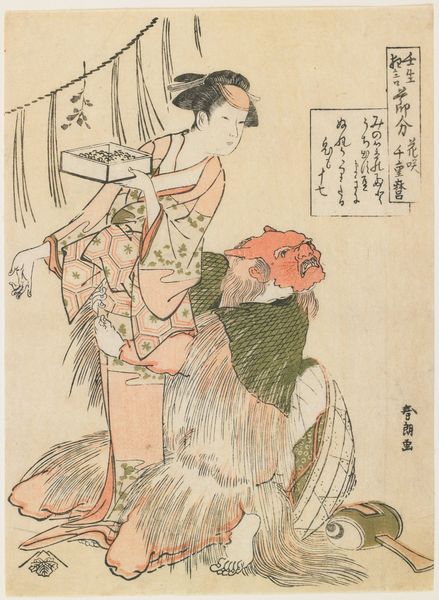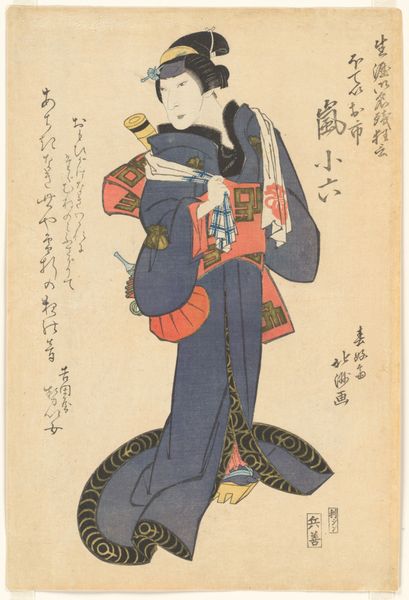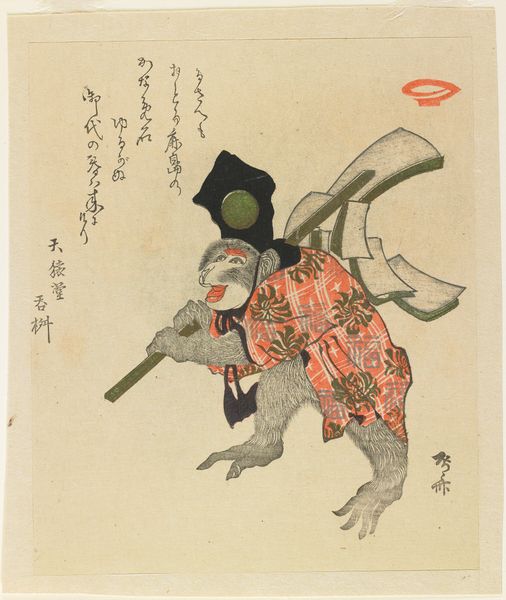
print, watercolor, ink, woodblock-print
# print
#
caricature
#
caricature
#
ukiyo-e
#
personal sketchbook
#
watercolor
#
ink
#
woodblock-print
#
watercolour illustration
#
watercolor
Dimensions: 7 11/16 x 7 1/16 in. (19.6 x 18 cm) (image, sheet)
Copyright: Public Domain
Curator: Hokkei, working sometime between 1810 and 1839, presents us with this curious print titled "Number (Globefish)." What strikes you immediately? Editor: Well, besides its odd title, the most immediate impression is a rather morbid whimsy. A pufferfish, rendered in surprising detail with watercolor and ink, appears to be… impaled on a knife? It's darkly humorous, I must say. Curator: Dark indeed, but characteristic of the ukiyo-e tradition's playful side. Notice the smaller image above the fish? The bundled object is meant to suggest a person or sake master's hair done in Yanagi style which means willow which suggests being soft and pliable. So the print then alludes to ideas and plays of control and mastery. Editor: It's a very suggestive composition! The artist is not simply presenting an image, but asking us to interpret a culturally laden scenario of nature tamed—or in this case, soon to be consumed! Curator: Absolutely. We can understand this piece as part of the flourishing woodblock-print culture of the Edo period in Japan. Think about the context: commercial expansion, urban life developing a middle class who consumes more, plus theater and other public entertainments getting increasingly polular. Images were then instruments, and these kinds of prints were aimed at the popular audiences with the objective of appealing to people of different kinds who may or may not understand the message immediately but enjoy the pictorial image in general. Editor: A commodity, even? Even in art. It still brings up several readings on its symbolism though; for one, is it about to be cut up for dinner? This globefish is considered a delicacy in Japan, however, a dangerous one... one wrong cut and its poison could prove lethal to those wanting to eat the fish. Hokkei seems to understand that it must then stand for mortality! Curator: Exactly! You've identified several layers. In this object, the artist brings in the everyday—culinary culture and its fears—and frames them inside social and historical settings of their time. How potent a combination, then. Editor: Absolutely. Considering the history, visual puns and their complex connotations, seeing how such images function then gives them more value than if they are simply considered 'prints'. What a delight! Curator: Indeed, I’ll never look at Fugu quite the same.
Comments
No comments
Be the first to comment and join the conversation on the ultimate creative platform.

